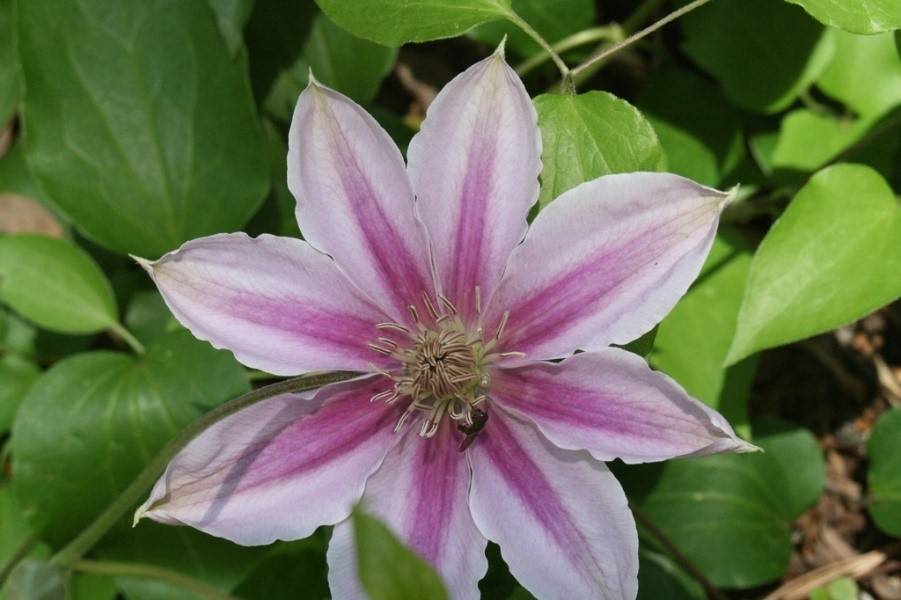Clematis

This beautiful vining plant is often called the "Queen of the Vines" for its attractive blooms and climbing nature. The clematis has long been a popular vine for a variety of reasons. In modern times, we love this plant because of its wide range of bloom colors, the large blooms, and its range of bloom times; however, in ancient times, the clematis was prized for very different reasons. Historically, Europeans once used clematis to make fish traps, baskets, and wicker. In contrast, Africans used its dried roots as tinder to start fires, and Roman beggars used to rub their hands with sap from this plant to form sympathy-evoking blisters. As you can guess, this vine is native to a wide range of the world, including North America, Europe, India, Australia, China, Japan, and New Zealand, depending on the species we are discussing. Worldwide, there are about 300 clematis species, but only a few hybridized species are currently grown as ornamentals.
These vines prefer full sun with afternoon shade in hot summers and moist, well-drained soils. It is possible to mulch around clematis's roots to keep them cool in the summer heat. Clematis blooms come in almost every color imaginable and range in size from an inch to seven inches, depending on the variety. Many clematis bloom from spring through summer; however, a few varieties bloom in the fall. Clematis are heavy feeders and will need a slow-release fertilizer every four to six weeks through the growing season to keep them going. This vine has few disease or insect issues and is relatively low maintenance except for occasional pruning, watering, and fertilizer. Before you prune your clematis, figure out whether it blooms on new or old growth and go from there. Be aware this plant is poisonous, so keep pets or children from playing with or eating the vines, leaves, and flowers.

Have questions? Contact our office where our Horticulture Extension Agent will assist you with questions.
Phone: (316) 321-9660
Email: callae@ksu.edu